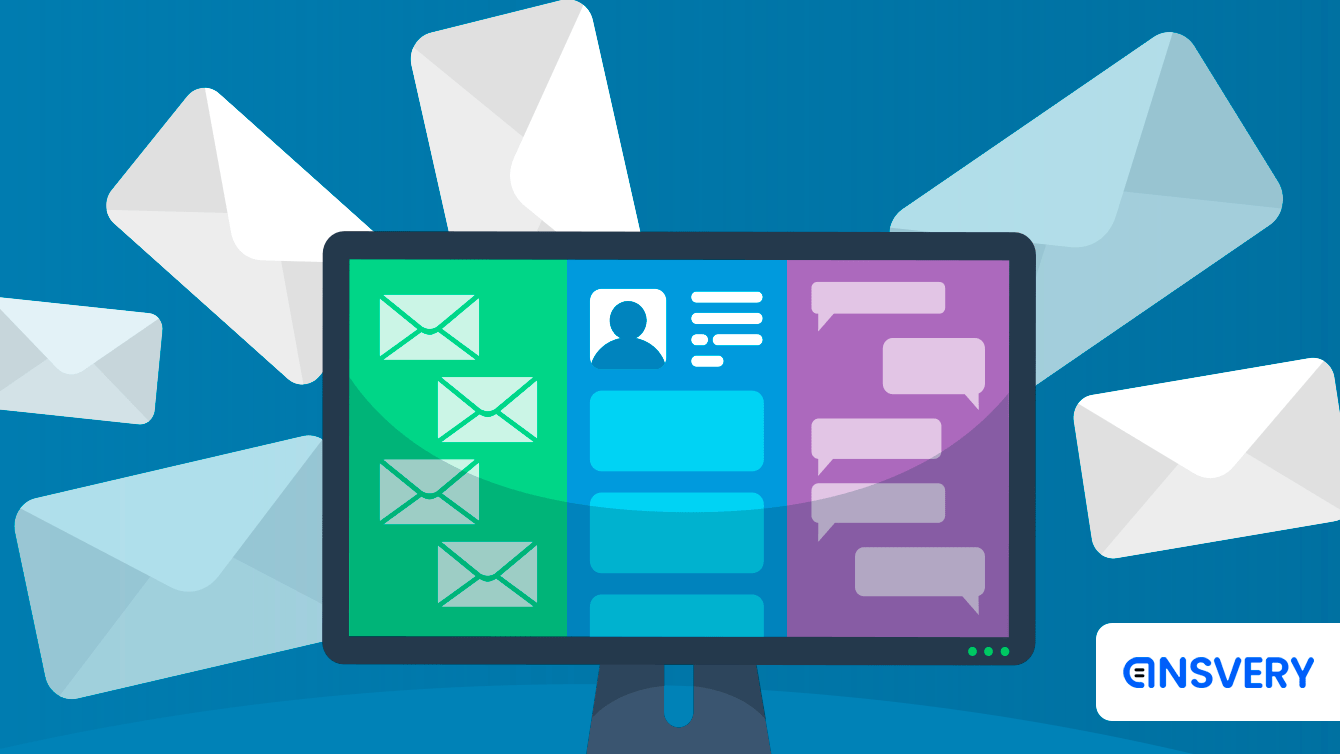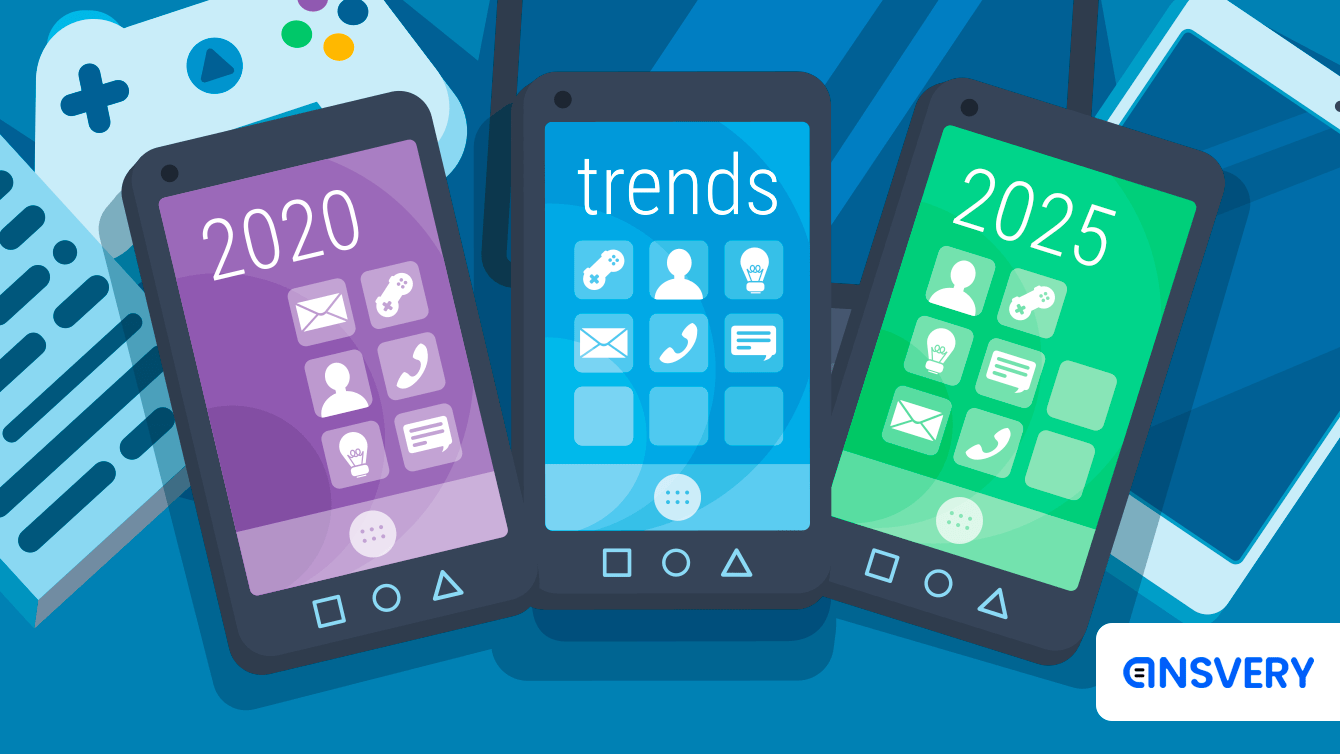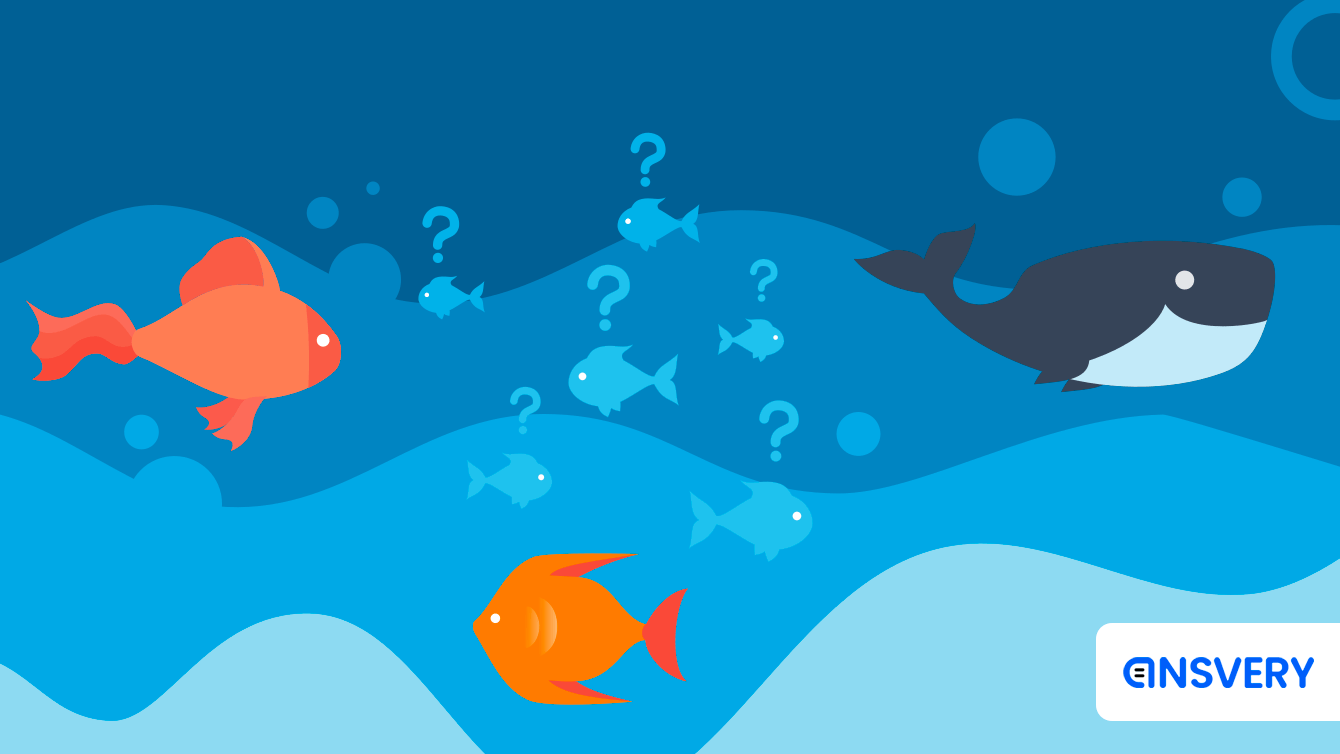Multichannel & Omnichannel Support: Best Ways to Organize User Communication
The author of the article, Maria Filippova, is a learning and development specialist in Ansvery. She follows the latest trends in customer communication and introduces the best practices into the workflow to assist her colleagues' personal growth and create healthy culture of the support/customer interaction.
One of the first things you need to consider when organizing your support is the channels that your customers will use to contact you. Both the number of channels and their function are of great importance: a point of contact is the first thing a user assesses when they start talking to the support team, so it is vital to produce a favourable impression right from the beginning.
It is likely that when you are setting up your support or introducing changes into its structure, you might want to seek some expert advice – perhaps even on the Internet. After all, there is no shortage of blogs where authors forward their opinions on how to build support the right way. The reasonable question here is whether their advice applies to your circumstances.
In this article, we’ll try to get to the bottom of this. We will focus our attention on two popular concepts – multichannel support and omnichannel support. We will rely both on the experience of various specialists from all around the world, and the practical knowledge Ansvery support outsourcing team has gathered over the years.
Read more: Кey Support Trends: Learn from the Past and Change the Future
Necessary terms
The term "multichannel support" is self-explanatory. You provide your users with several contact options: email, messengers, social network pages, etc. All these channels function separately and independently from each other and user data is not passed from one channel to another automatically. At the same time, multichannel can be quite effective if this type of system fits a company’s needs.
Omnichannel support also guarantees a variety of choices. However, while in multichannel support each channel functions separately, in omnichannel support, all of them are connected to create a single entity. So even if a user decides to switch channels, all their data will follow them to the new contact point, and the support agent will not lose the thread of the conversation.
Read more: Non-paying users: to support or not to support?
The way the omnichannel came to be is quite natural and understandable. Experts have said it for a long time – we need to use those channels that our users prefer. As a result, companies started to pile up as many contact options as possible in order not to miss any user requests. However, it became clear very quickly that users will not necessarily stay in the same channel throughout the conversation. And if your channels are not connected, the user will have to put some extra effort into explaining their problem once again. It's like they go from one room into the next and meet different people who do not know who the user is. And the user has to introduce themselves yet again. So it is only right to have one conversation per user regardless of how many contact points they have used. It is much more satisfactory when everybody remembers who you are when you step over the doorstep.
It is not surprising then that omnichannel support is so popular these days – or, at least, so actively promoted. Some experts actually hint at its omniscience, omnipotence, and omnipresence.
“Whilst we are not claiming that omnichannel is divine, it should still provide your business with an influential tool that empowers you and your staff with the knowledge of context, and enables you to communicate across an array of channels and devices.”
There are several distinct advantages of the omnichannel pointed out by the experts:
-
You can support an almost indefinite number of channels of different types;
-
You can collect and store all the necessary user data;
-
Your resolution time will go down;
-
So will user effort;
-
You can easily apply a single communication strategy to all your channels;
-
And provide a cohesive user experience.
These look like sufficient grounds for making your support omnichannel immediately. However, not everything is as rosy as it may appear.
Read more: Triple Impact: How Support Affects Profit, Loyalty, and Customer Experience
Obstacles
It has been long noted that the omnichannel approach can cause some difficulties.
For example, it may require a lot of resources and effort to introduce. In order to make your omnichannel support successful, you need to do extensive preparatory work. You will wish to study your customers, find out what channels they prefer, create a general branding strategy for your company, and learn how to use it correctly at every stage of the customer journey. You will need to create not just a great “überchannel”, but a whole omnichannel strategy to assure customer success.
Besides, users could not care less how you call your approach to customer support and how trendy it is. They only want communication to be easy and effective. So if something goes wrong with your omnichannel, they might not appreciate your fashionable and complicated system one bit.
There is another angle you need to consider. Many of those who promote the omnichannel are those who actually create this kind of system. They can hardly be called impartial. So before you make a final decision, analyze your user base carefully and weigh all the pros and cons.
An Informed Decision
So how can you understand if you really need the omnichannel with its great variety of contact options? Do you need to dismiss your multichannel approach and pursue the omnichannel? There is no simple answer to this question. As always, we recommend you to be guided by the situation.
Your decision may depend on:
-
You resources
You need to assess your resources correctly and be sure that you will have the means to support a complicated omnichannel structure for a long time. Trends and useful features are a great thing. But one should not try to chase a racehorse on foot. You won't be able to catch it anyway, but it is easy to fall from exhaustion on the way.
-
Your project size
If your project is not large, if it has not yet touched the heights of success, if you receive four requests a day, then you will easily do without an omnichannel system. You probably already know everything there is to know about the users that contact you - starting with their device model and ending with their tastes, habits, the size of their family, and the names of their pets. The larger your project is and the more requests you receive, the more you need the omnichannel.
-
The quality of your corporate culture
As I have mentioned before, the omnichannel does not only mean linking all your channels purely physically. You also need to create a cohesive customer experience and communication strategy. The omnichannel means a customer-centric approach. If you have not yet introduced such an approach, then the omnichannel will not work as it should. First, you need to ensure the correct support culture, and only then you can apply a complicated communication strategy. You can't make your support instantly better like by magic if you merely connect all your channels. Just look at the all American experts and researchers' favourite – COMCAST. It gets more customer hate than all its competitors which clearly proves that the omnichannel is nothing without respect towards users. If your agents do not know your project well, if they ignore users' pleas, and if they do not use their soft skills, then it does not matter whether your channels are linked or not. Your users will still have to explain their problems several times – maybe even to the same agent. This is why we always make sure that our specialists have a complete and refreshable knowledge base at hand and that their communication skills are constantly improved.
Quantity or Quality?
The second question you may ask while setting up a multi- or omnichannel system is "How many channels do users need?"
The commercial texts about CRM-systems and blogs that advertise these systems suggest that we use as many communication channels as possible. They recommend that companies find out which channels and messengers their users prefer and include them all. However, some experts believe that this is not such a good idea. Most of your users will have more than one messenger, and they will also be able to contact you via other channels: email, social networks, directly in the game or app, via a special form on the site, an app store, a forum, etc. Some of them might even come to your office in person. The variety of choices in itself can present some difficulty to your users. It causes something that is called 'decision fatigue' – when a person gets two equal options, and they cannot decide which one to choose first. (Do you remember the tale about the donkey which could not decide between two equal heaps of hay and died of hunger?) It is best to select a limited number of options and make them as comfortable to use as possible.
In 2017 Matt Dixon (one of the advocates of the "effortless experience" approach) said that "channel choice is an idea companies invented. Customers don't want choice, they want channel guidance".
Shortlist
If we try to make up a list of necessary support channels, then – from the point of view of our support team – it will look like this:
1. Email. Although a lot of users nowadays prefer in-game/in-app options, email still holds some ground. Also, a user's account can be linked to their email address, so this information can definitely be of use to you.
2. In-app chat. It is easy to find and use. Your users will not have to leave your app or break their game session for long to write you a message. It is entirely up to you whether you will make this a live chat or not. It all depends on your resources. However, if your users will have to wait a little for a reply, make sure that your response time is as short as possible and, ideally, stated in your greeting message. Actually, we would advise you to integrate an in-app chat at the first opportunity.
A personal observation, if I may. I have written to many support services, and it is extremely tiresome when there is no in-app chat. You tap the 'Contact Support' button, and immediately everything freezes, and then a mail app begins to open - slowly and inevitably like the Gates of Hades. The temptation to close this portal to the Abyss and never touch it again is very strong.
3. App store reviews. This is an extremely important channel. You don't simply solve your users' problems there. More than that – it is often impossible to solve these problems in reviews, you need to direct your users to other support channels. More than anything else, your app store replies help you promote your brand. It is a perfect opportunity to showcase your customer policy and your concern for their well-being and to attract new users.
4. Social networks. They are such an important part of your users' lives that you simply cannot neglect them. They will allow you not only share your news but also advise your users on the gameplay or app features and resolve simple technical issues.
This is not a very long list, but we find these channels are sufficient to cover all your users' needs. Besides, most of the modern CRM systems support at least three of these four channels and will allow you to introduce the omnichannel approach.
Conclusion
While planning your support system, consider not only your needs but also your resources. When we are helping our clients to set up their support, we always make a preliminary analysis of their work processes and their user base. And then, based on our experience, we try to take into account all the factors to choose the most suitable contact channels and make support as efficient as possible.
And remember this: if your channels are not organized properly if it takes your users too much effort to contact you, if the way you collect user data is poorly tuned, if you don't have a right communication strategy, and if your agents are not empowered enough to resolve user issues quickly and efficiently, then it really doesn't matter if your support channels are interconnected or not. So first of all, you need to ensure the quality of each separate element of your support structure, and only then can you bind them together to create a single working mechanism.



